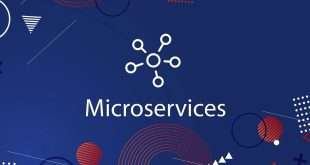In today’s fast-paced digital landscape, efficient data exchange is crucial for the success of any application or system. As businesses strive to deliver seamless experiences to their users, the need for high-performance web services frameworks becomes paramount. In this comprehensive guide, we delve into the world of SOAP (Simple Object Access Protocol) web services frameworks and explore how they can accelerate data exchange, ensuring smooth communication between disparate systems. Let’s embark on this journey to unravel the power and potential of SOAP web services.
Understanding SOAP Web Services
SOAP web services have long been a stalwart in the realm of web services. Unlike their RESTful counterparts, SOAP is protocol-agnostic, allowing data to be transmitted over various communication protocols, including HTTP, SMTP, TCP, and more. The inherent versatility of SOAP makes it an excellent choice for enterprises dealing with complex and mission-critical applications that require secure and reliable communication.
SOAP web services operate on XML-based messaging, enabling data exchange in a standardized and structured manner. This robustness ensures that information is accurately interpreted and processed, reducing the chances of data corruption or miscommunication.
The Inner Workings of SOAP Web Services
To fully grasp the potential of SOAP web services frameworks, it’s essential to understand their inner workings. At the heart of SOAP lies the XML-based messaging format, which facilitates communication between the service provider and the consumer. When a SOAP request is made, the client sends an XML envelope containing specific elements such as the message header, body, and fault. The server processes this envelope and responds with an XML message, providing the requested data or action.
The XML nature of SOAP enables platform independence, making it ideal for heterogeneous environments. Furthermore, the built-in support for security features, such as encryption and digital signatures, ensures that sensitive data remains protected during transmission.
Advantages of High-Performance SOAP Web Services Frameworks
Superior Security Measures
High-performance SOAP web services frameworks prioritize security, which is of utmost importance in today’s cyber-threat landscape. With features like WS-Security, SOAP ensures data confidentiality, integrity, and authentication, thwarting potential security breaches and ensuring peace of mind for businesses and users alike.
Reliability and Error Handling
Reliability is a critical aspect of web services, particularly for enterprise-level applications. SOAP provides robust error handling mechanisms, allowing both service providers and consumers to identify and address issues effectively. By implementing retry and rollback strategies, SOAP ensures that data exchange continues seamlessly even in the face of temporary failures.
Comprehensive Standards Support
SOAP adheres to a plethora of industry standards, making it an attractive choice for organizations with diverse technology stacks. From WS-Atomic Transaction for distributed transaction management to WS-Reliable Messaging for guaranteed delivery, SOAP’s extensive standards support makes it a powerful contender in the web services domain.
Interoperability and Platform Independence
SOAP’s platform-independent nature allows applications running on different operating systems and architectures to communicate seamlessly. This interoperability ensures that SOAP web services can be integrated into existing systems with ease, reducing the complexity of system integration projects.
Legacy System Integration
For businesses with legacy systems, SOAP web services frameworks present an elegant solution. SOAP’s flexibility enables it to interact with older systems, enabling organizations to leverage existing infrastructure while modernizing their applications.
Implementing High-Performance SOAP Web Services
Choose the Right Framework
Selecting the appropriate SOAP web services framework is the foundation of a successful implementation. Evaluate different frameworks based on performance benchmarks, security features, and compatibility with your existing technology stack.
Optimize Message Structure
Efficient data exchange is achieved through thoughtful message design. Optimize the XML structure to reduce message size and processing time, enhancing the overall performance of SOAP web services.
Caching for Enhanced Performance
Introduce caching mechanisms to store frequently requested data temporarily. This technique can significantly reduce response times and lessen the burden on the server, resulting in improved performance.
Load Balancing and Scalability
Implement load balancing strategies to distribute incoming requests across multiple servers, ensuring that no single server becomes overwhelmed. Additionally, design your SOAP web services with scalability in mind to accommodate future growth and increased demand.
Commonly Asked Questions
Q1: Are SOAP web services limited to a specific programming language?
No, SOAP web services are not limited to a particular programming language. They can be implemented in various languages like Java, .NET, PHP, Python, and more, making them highly adaptable to diverse technology stacks.
Q2: How do SOAP web services compare to RESTful APIs in terms of performance?
SOAP web services generally have a higher overhead due to their XML-based messaging. However, high-performance SOAP web services frameworks can compete with RESTful APIs in terms of performance, especially for complex enterprise applications.
Q3: Can SOAP web services be used for real-time communication?
While SOAP web services excel in reliability and security, they might not be the best choice for real-time communication due to the inherent XML processing overhead. For real-time applications, consider using WebSockets or other specialized protocols.
Q4: Is SOAP still relevant in the age of RESTful APIs?
Yes, SOAP still holds relevance, especially in enterprise environments where security and reliability are top priorities. SOAP and RESTful APIs can coexist, with each serving different use cases based on specific requirements.
Q5: How do I handle versioning in SOAP web services?
Versioning in SOAP web services can be managed through various techniques like URL versioning, custom headers, or by using namespaces. Choose a versioning strategy that aligns with your application’s needs and ensures backward compatibility.
Final Words
In conclusion, high-performance SOAP web services frameworks remain a powerful and reliable solution for accelerating data exchange in the digital era. With their robust security measures, interoperability, and legacy system integration capabilities, SOAP continues to be a valuable choice for enterprise-grade applications. By optimizing message structures, implementing caching, and ensuring scalability, organizations can harness the full potential of SOAP web services and deliver exceptional user experiences. Embrace the power of SOAP, and propel your data exchange to new heights.
 webfily
webfily



